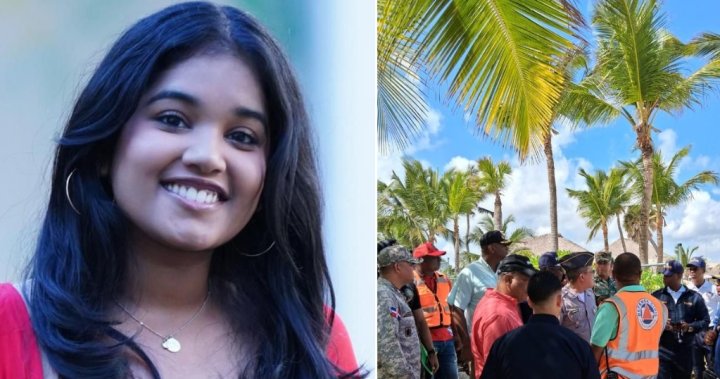 Alma Mustajbaši?
Alma Mustajbaši?Mar 31 (IPS) -
CIVICUS discusses recent protests in Serbia with Alma Mustajbaši?, researcher at Civic Initiatives, a Serbian civil society organisation that advocates for democracy, human rights and citizen engagement.
 Alma Mustajbaši?Following the deaths of 15 people in the collapse of the roof of a newly reconstructed railway station in November 2014, student-led protests have swept across Serbia, uniting diverse social groups against governance failures and government corruption. Despite harsh crackdowns including arrests and violence, the movement has employed direct action and effective social media strategies to demand systemic reforms. The movement has even made a rare impact in rural areas through long protest marches, breaking the government-imposed climate of fear and inspiring renewed political engagement.
Alma Mustajbaši?Following the deaths of 15 people in the collapse of the roof of a newly reconstructed railway station in November 2014, student-led protests have swept across Serbia, uniting diverse social groups against governance failures and government corruption. Despite harsh crackdowns including arrests and violence, the movement has employed direct action and effective social media strategies to demand systemic reforms. The movement has even made a rare impact in rural areas through long protest marches, breaking the government-imposed climate of fear and inspiring renewed political engagement.What triggered the current protests?
Protests started following a tragedy that occurred in Novi Sad, Serbia’s second-largest city, on 1 November last year. That day, the canopy of a newly reconstructed railway station collapsed, killing 15 people. The station had already had two official inaugurations, one in 2022, attended by President Aleksandar Vu?i?, and another in 2024, in the presence of other high-ranking officials.
The reconstruction contracts, signed with a consortium of Chinese companies, were kept secret, leading many to blame corruption for the collapse. People’s immediate reaction was to protest, holding 15-minute commemorative traffic blockades under the slogan ‘Serbia must stop’, to pressure the authorities to identify and punish those responsible for the tragedy.
At one of the commemorative gatherings outside the Faculty of Dramatic Arts in the capital, Belgrade, protesters including students and professors were attacked by ruling party members and supporters. This was the immediate reason that the students of this faculty, and then from other state universities and some private ones, decided to blockade their institutions and suspend classes until their demands were met. They demanded the publication of all documents related to the station’s reconstruction, which still remained confidential, the dismissal of charges against those arrested and detained during the protests, the identification, prosecution and removal from public office of those responsible for the attacks on students and other protesters, and a 20 per cent increase in the higher education budget.
The tragedy in Novi Sad was a tipping point, but public frustration had been building up for years. Deep-seated corruption, secretive government contracts and ruling party-based recruitment practices have eroded trust in public institutions. With biased media, unfree institutions, unresolved government affairs and consistently unfair elections, many people feel voiceless. The daily targeting of political opponents and Vu?i?’s increasingly repressive rule only add to the anger.
How has the protest movement evolved?
The Novi Sad station collapse sparked a powerful student movement that united diverse parts of society, quickly gaining support from cultural figures, educators, farmers, industry workers and lawyers. For months, there have been protests almost every day, growing in size and intensity, with tens of thousands participating in road blockades, silent vigils and long marches across Serbia.
In early March, hundreds blockaded the public broadcaster, Radio Television of Serbia, in Belgrade, accusing it of biased coverage favouring Vu?i?. Vu?i? had appeared on the main news bulletin condemning the movement, accusing protesters of carrying out a ‘colour revolution’ and being supported from abroad and warning they could ‘end up behind bars’. Clashes erupted as riot police used batons in an attempt to disperse the crowd.
The government has cracked down hard. It has arrested students and orchestrated violent attacks, including serious assaults on female students. There have been reports of phone hacking and smear campaigns in pro-government media. People who support the protests, including teachers and civil society organisations, have also faced intimidation and retaliation.
One of the latest in a series of incidents happened at a protest held in Belgrade on 15 March, which was the largest in decades, with several hundred thousand people joining, according to independent observers. The 15-minute silence was broken, according to eyewitnesses, by a loud noise and a feeling of heat, which led to a stampede. More than 3,000 people had symptoms that included nausea, headaches, rapid heartbeat, hearing loss, anxiety, panic, tremors, disorientation and a sense of losing control. The authorities deny they used a sound cannon against protesters, although one such device was photographed on a police vehicle close to the protest site.
How do these protests compare to previous movements?
Serbia has a long history of civic movements, from student protests in the 1990s to the ‘1 of 5 Million’ protests following an attack on an opposition leader in 2018 and 2023 ‘Serbia Against Violence’ protests following two mass shootings. But these protests have lasted much longer and have received support from wider social groups.
The 2024 student movement is also different from previous ones in several ways. It uses direct democracy, discussing plans and making decisions in plenary meetings. Each faculty has working groups that manage accommodation, logistics, media communication, security and overall coordination. There are no formal leaders. The movement operates as a collective.
As part of Generation Z, protesters use social media effectively, blending creativity and humour to reach a broad audience, which is crucial in a country where media freedom is limited. Their messaging also reaches beyond Serbia’s borders.
This student movement is also different in that its demands are not focused on changing the government for an alternative political option. Protesting students refuse to align with opposition political parties and instead seek to strengthen cooperation with trade unions. They want deeper systemic changes to establish the rule of law and independent institutions. These are calls for profound social change in a society burdened by corruption.
Significant judicial and political reforms will be needed to respond to students’ demands. This won’t be easy, but the momentum suggests people are ready to fight for it.
What are the biggest obstacles to change?
There are numerous obstacles. The biggest are corruption, the lack of independent institutions and the absence of conditions for free and fair elections.
Right now, it’s hard to predict where these protests will lead. Just a few months ago, a movement of this scale, led by young people, seemed unlikely. Yet students have managed to break the climate of fear imposed by the regime and inspire more people to engage in political life.
Students have held long protest marches, walking hundreds of kilometres to support mass demonstrations in other cities and stopping in small towns and villages along the way, reassuring people in rural areas that they are not forgotten. They’ve sparked solidarity, empathy and a renewed belief in collective action. Their determination has sent a powerful message: perseverance can lead to real change.
GET IN TOUCHWebsiteEmailFacebookInstagramTwitterYouTube
SEE ALSOSerbia: ‘We live in a system that’s allergic to pluralism, with a government hostile to critical voices’ CIVICUS Lens | Interview with Tamara Brankovi? 02.Jul.2024 Serbia’s suspicious election CIVICUS Lens 26.Jan.2024 Serbia: ‘People are concerned that a critical tool to hold political elites accountable is being taken away’ CIVICUS Lens | Interview with Raša Nedeljkov 19.Jan.2024
Follow @IPSNewsUNBureau
Follow IPS News UN Bureau on Instagram
© Inter Press Service (2025) — All Rights Reserved. Original source: Inter Press Service

 1 day ago
4
1 day ago
4









 English (US) ·
English (US) ·